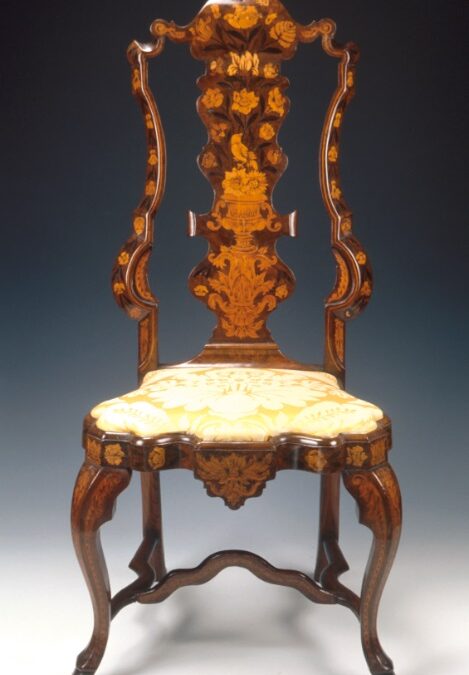
Dutch Rococo marquetry chairs
A set of four chairs, each part ornately shaped and decoratively inlaid with foliage, urns, and flowers. Doris Duke bought these chairs in New York at auction in 1972 from the estate of Jessie Woolworth Donahue.

A set of four chairs, each part ornately shaped and decoratively inlaid with foliage, urns, and flowers. Doris Duke bought these chairs in New York at auction in 1972 from the estate of Jessie Woolworth Donahue.
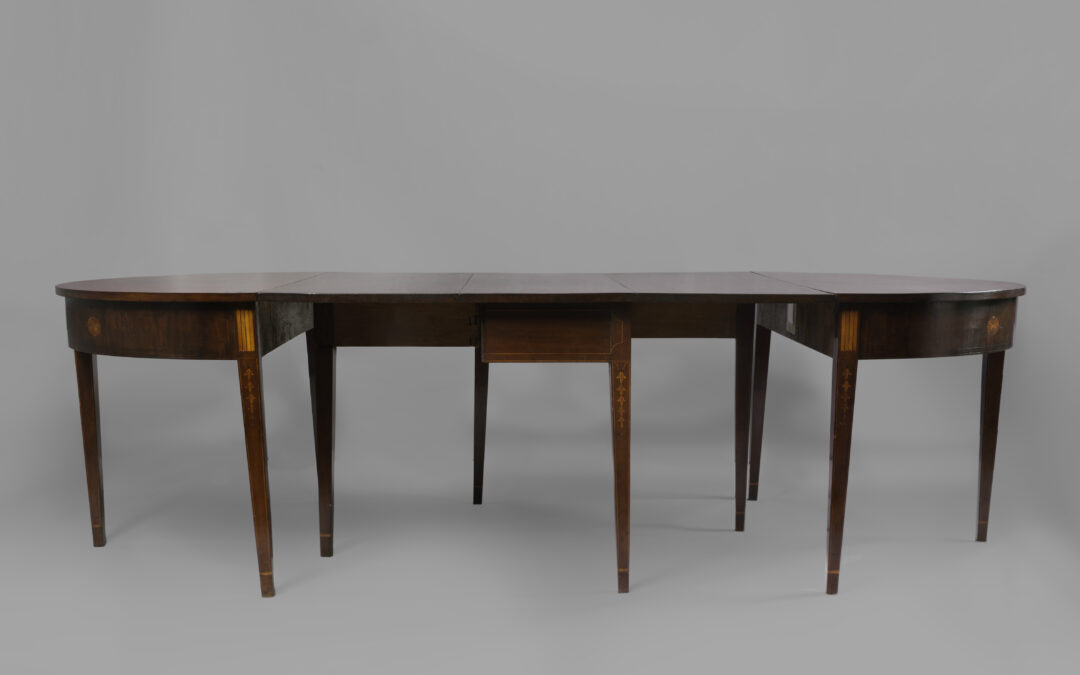
This dining table is an example of the type of architectural furnishings considered to be necessary in 18th-century dining spaces. It is an example of 18th-century modular design, as the table can separate into two consoles and a smaller center table. The plinths above each leg are decorated with four undulating vertical blocks or “book inlay,” a feature associated with the workshop of John Townsend. On the legs is a string of five bellflowers centering a spine of black inlay—characteristic of marquetry in Newport. Pasted on the center of one of the back rails of one of the consoles is a rectangular engraved label reading MADE BY / JOHN TOWNSEND, / NEWPORT. with the date 1796 written by hand.
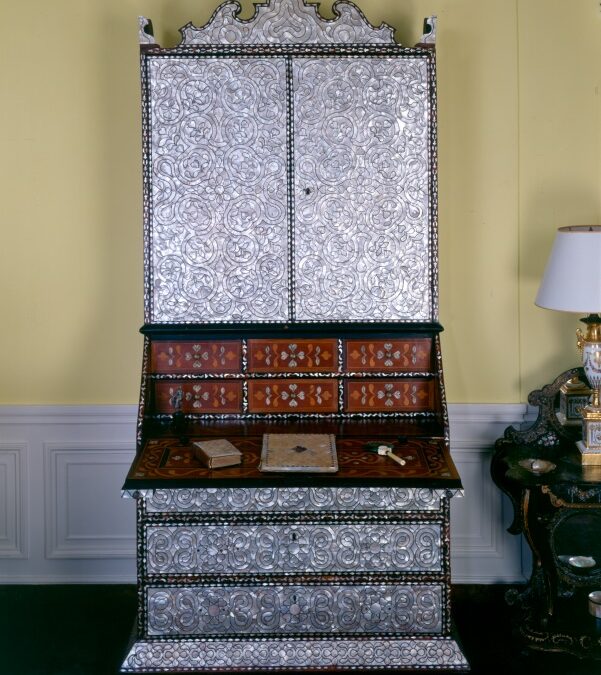
This mother-of-pearl veneered desk and bookcase is one of the first pieces of furniture that Doris bought for Rough Point. She purchased it at auction in December 1957.
Like many other examples in that she purchased and displayed, this piece is a good example of cross-cultural exchange and how the trans-Atlantic trade system influenced design and taste.
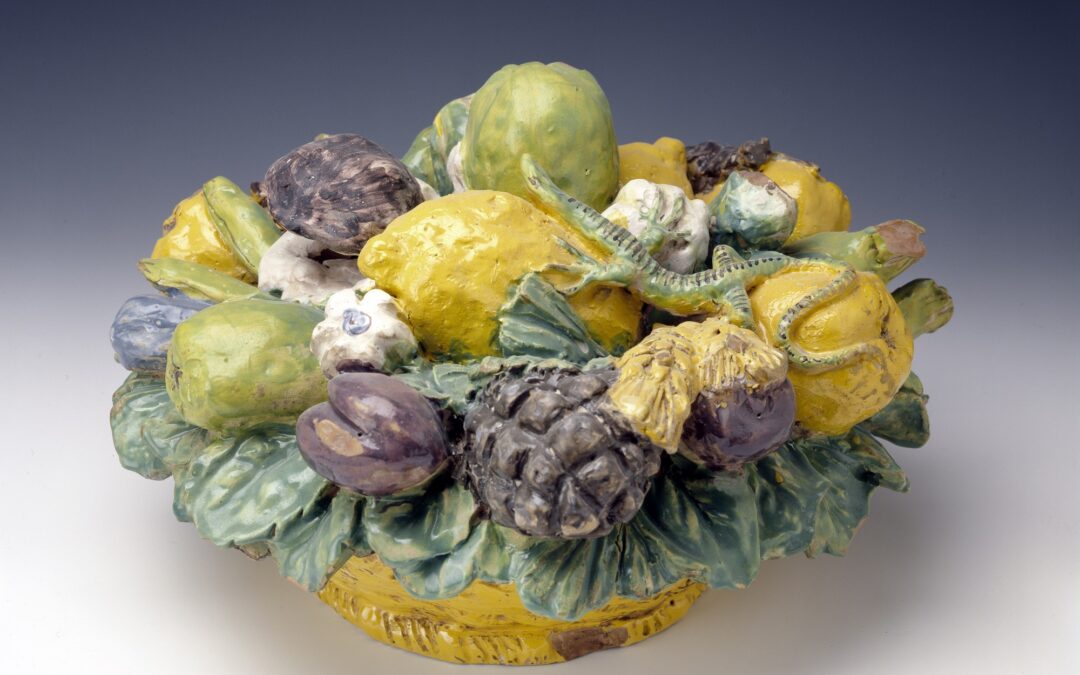
Doris Duke purchased this pair of earthenware fruit baskets, which include lizards, frogs, and insects in their decoration, in 1960. She likely thought they were the work of the renowned della Robbia workshop, and placed them alongside other earthernware works. However, recent conservation work has revealed that these pieces are likely made in the style of della Robbia.
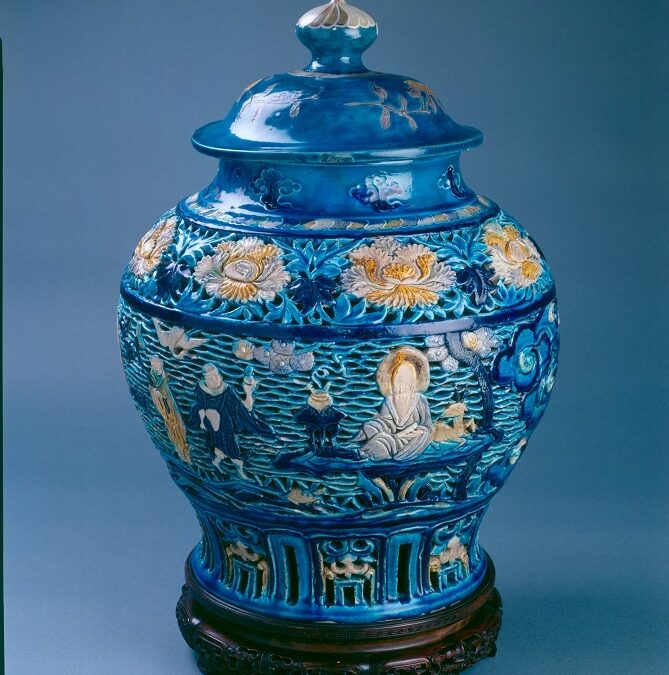
Coveted by collectors across West Asia and the Islamic world, and later Western countries, this jar represents master artisanship and technical excellence that no other makers in the world were able to reproduce.
The careful separation of colors on the glazed enamel surfaces points to a technological achievement called fa-hua and it allowed artisans to incorporate colored glazes into the ceramics without having to use paint after
the piece was fired in a kiln — helping insure the vibrant colors lasted for centuries without fading.
Like many other American collectors in the 19th and 20th centuries, the Duke family purchased jars like this one to display in their homes and to show off their wealth, sophisticated taste, and understanding of “exotic” cultures.
Purchased by Doris Duke in 1972.